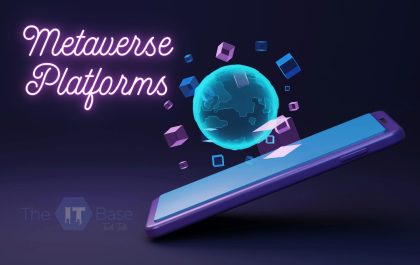Some of the earliest techniques included brainstorming, the nominal group technique, and the Delphi technique. These techniques allowed participants to generate ideas, evaluate solutions, and come to a consensus on a given issue.
In the 1960s and 1970s, more analytical techniques were developed to help organizations better analyze their strategies. These included SWOT analysis, scenario planning, and PEST analysis. These techniques used quantitative methods to evaluate an organization’s internal and external environment and then develop strategies to capitalize on its strengths and address its weaknesses. check out more information about cbap training at e-learning adaptiveus
Today, meeting technique are still used in a variety of organizational settings. They are used to analyze strategies, develop plans, and evaluate progress. They are also used to bring stakeholders together to discuss and resolve issues. Meeting techniques are an important part of any organization’s strategy and can help ensure that strategies are sound and successful.
Table of Contents
Purpose
A meeting is where a group of people come together to discuss ideas or issues, enhance communication, promote coordination, deal with any matters that are put on the agenda, and help get tasks done.
Description
Meetings are inevitable events during strategic analysis. Here are a few tips for making meetings effective. By following the below-mentioned approach, Strategic analysis practitioners can ensure effective meetings. Download business analyst interview questions here for Free
Prior to meeting
- Is there a clear goal for the meeting?
- Is there a clear agenda for the meeting?
- Are only required participants invited?
- Is the agenda and review material shared well ahead of time?
- Is infrastructure needed for the meeting organized?
- Are participants instructed to come prepared for the meeting?
During meeting
- Are meeting goals expressed?
- Are the meeting rules described?
- Is the s scribe designated?
- Are discussion points time-boxed?
- Are updates provided on tasks from the previous meeting(s), if applicable?
- Are the participants following the agenda?
- Are the discussions within the allocated time?
- Are decisions being recorded?
- Are action items being identified?
- Are all decisions and tasks summarized?
- Are follow-up meetings scheduled if required?
Post-meeting
- Are minutes distributed within the next business day?
- Are minutes filed?
- Are tasks tracked and followed up if not completed by the due date?
Usage considerations
Well-organized and conducted meetings can serve several purposes like sorting out conflicts, negotiating agreements, dealing with problems, sharing ideas for consideration and implementation, and much more.
Advantages of Meeting Techniques as a strategy analysis technique
- Flexibility: Meeting Techniques are very flexible and can be adapted to any situation. It is easy to adjust the format of the meeting to accommodate different objectives, stakeholders, and other considerations.
- Inclusivity: Meeting techniques effectively gather input from different stakeholders to identify a wide range of perspectives and ideas.
- Efficiency: Meeting Techniques can be used to quickly identify and discuss key issues, allowing decisions to be made quickly.
- Clarity: Meeting Techniques make the objectives and process of the meeting clear to all participants. This ensures that everyone is on the same page and can work together to achieve the desired outcomes.
- Creativity: Meeting Techniques encourage creativity and collaboration among stakeholders, allowing them to think and come up with innovative solutions to problems.
Weaknesses of Meeting Techniques as a strategy analysis technique
- Lack of Data: Meeting techniques rely heavily on the participants’ opinions and don’t typically take into account all the available data and facts, which can lead to an incomplete understanding of the situation.
- Time-Consuming: Meeting techniques can be time-consuming and resource-intensive, as they require a lot of time and effort to gather, discuss, and analyze data.
- Subjective: Meeting techniques can be subjective, as the participants’ opinions and experiences can heavily influence the outcome.
- Limited Reach: Meeting technique are limited in reach, as it only gathers the opinions of those in the meeting, which may not be representative of the entire population that may be affected by the strategy.
- Groupthink: Meeting techniques are prone to ‘groupthink,’ where the participants are more likely to agree on certain decisions or opinions rather than challenge them.
Relationship of Meeting Techniques with other strategy analysis techniques
The relationship between meeting techniques and other strategic analysis techniques is one of complementarity. Meeting technique can be used to supplement other strategy analysis techniques, such as SWOT analysis and Porter’s Five Forces. In addition, meeting technique can give teams a better understanding of the internal and external environment, helping them identify and assess opportunities, risks, and other factors that can impact strategy and performance.
For example, by bringing together stakeholders from different departments and levels of the organization, meetings can help identify different perspectives and assumptions that could be overlooked in traditional analysis methods. Additionally, meetings can help to identify and analyze trends and developments in the markets and industries in which the organization operates. They can also be used to brainstorm potential strategies and evaluate the feasibility of those strategies. Finally, by combining meeting technique with other strategy analysis techniques, organizations can better understand their environment and develop more effective strategies.
Future of Meeting Techniques as a strategy analysis technique
The future of meeting techniques as a strategy analysis technique is very promising. As technology continues to advance, new and more efficient meeting technique are being developed. This allows for more timely and effective communication between team members and allows for a more accurate analysis of strategies. Additionally, new tools and technologies can help to streamline the process of meetings, allowing for more efficient use of resources. As meeting technique become more advanced, they will become even more valuable for companies and organizations looking to develop effective strategies.
Related posts
Hot Topics
Metaverse Platforms for Virtual Workspaces
Ever felt like your office is stuck in the Stone Age? Tired of endless Zoom calls that feel about as…
IoT Protocols: The Language of Smart Devices
Ever wonder how your smart fridge talks to your phone? Or how does your fitness tracker know to buzz when…



